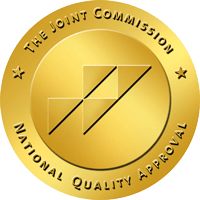Drug abuse, addiction, and substance abuse problems often start with experimenting with gateway drugs, recreational drugs, nicotine, and alcohol. Drugs and alcohol all produce intoxicating effects by causing changes to your brain chemistry. Your brain releases excessive amounts of neurotransmitters whenever you use drugs or alcohol. This process can cause a rush of pleasurable emotions, which can lead to addiction and why you may need an Oxycodone addiction treatment center in California.
Alcohol, nicotine, and marijuana are among the most common gateway drugs. Gateway drugs are psychoactive substances that can be addictive and oftentimes lead to experimenting with harder or more dangerous substances. For example, prescription opiate painkillers are usually gateway drugs to substances like heroin. In fact, roughly half of all heroin users previously experimented with or were addicted to prescription opiates.
What are Gateway Drugs?
Gateway drugs are substances that can be psychologically or physically addictive but are known to lead to experimentation with harder, more dangerous drugs.
Some examples of gateway drugs include:
- Marijuana and hashish
- Cough syrup with codeine or dextromethorphan
- Nicotine
- Alcohol
- Tramadol and non-opiate painkillers
- Nitrous oxide and inhalants
Most people who develop physical addictions to drugs like meth, cocaine and heroin started experimenting with drugs like marijuana. Using gateway drugs can encourage future drug use if the experience with gateway drugs is positive. While not everyone who uses gateway drugs develops an addiction to gateway drugs or other substances, some people transition to harder drugs.
People who use marijuana are more likely to use and abuse harder substances later in life. Gateway drugs like marijuana, alcohol, and nicotine create cross-sensitization. Cross-sensitization means that you are more sensitive to the effects of other psychoactive substances. If you experiment with nicotine, alcohol or marijuana, you can experience a more intense euphoric high is you try other substances like opiates, stimulants or benzodiazepines.
Having a more intense or pleasurable high can increase your chances of developing an addiction. While you may escape developing an addiction to gateway drugs, gateway drugs can play a role in becoming addicted to other substances. For example, marijuana use increases your chances of developing an alcohol misuse disorder.
How Is Addiction Treated?
Addiction causes significant changes to your brain’s pleasure and reward center and creates serious neurotransmitter imbalances. When you use drugs or alcohol, your brain releases a rush of neurotransmitters. Over time, your brain begins rewarding your drug and alcohol use by releasing neurotransmitters when you use and withholding neurotransmitters when you don’t.
You begin to experience intense cravings and withdrawal symptoms when you try to stop using. Once you become addicted to a substance, you will compulsively crave and use your substance of choice despite wanting to stop or experiencing negative consequences as a direct result of your use. This process makes it especially difficult to quit using without help.
Addiction is a progressive and chronic condition, meaning that there is no cure. However, treatment helps you learn how to change negative thinking patterns and behaviors. Treatment also focuses on providing you with the support and resources you need to utilize healthy coping strategies when you are faced with cravings or triggers.
Recovery is a process. Your brain and body both need time to heal. During treatment, your brain begins to re-learn how to properly release neurotransmitters.
Finding Treatment Today
Gateway drugs can increase your risk of developing a serious substance abuse problem. Finding treatment is the first step in recovery from an addiction or substance abuse problem. Pillars Recovery, the best drug and alcohol and oxycodone addiction treatment center in California, knows what it takes to beat addiction. Call us today at 866.782.0247 to learn more about our programs and your treatment options.







